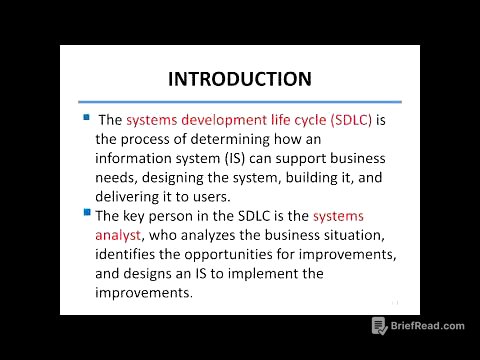TLDR;
This video provides ten practical tips to help English language learners transition from translating in their heads to thinking directly in English. The advice ranges from immersing oneself in English media and culture to actively practicing speaking and writing in English. The video emphasises the importance of patience, persistence, and creating a supportive learning environment.
- Surround yourself with the English language.
- Speak out loud in English.
- Use images to associate words with meanings.
- Think in English during daily activities.
- Practice thinking in English during quiet moments.
- Avoid over-reliance on translation apps.
- Use context clues to understand unfamiliar words.
- Keep a journal in English.
- Engage in conversations with native English speakers.
- Be patient and persistent.
Surround Yourself with English [0:24]
To start thinking in English, immerse yourself in English-speaking environments as much as possible. This includes watching English films, listening to English music, and reading English books. The more you expose yourself to the language, the easier it will become to think in English. A story about a student in South Korea who achieved fluency through self-immersion, despite not living abroad, illustrates the effectiveness of this approach.
Speak Out Loud [2:32]
Practise speaking English out loud whenever you can. Describe your surroundings, think of English words to describe different situations, or simply talk to yourself in English. This will help you become more comfortable with thinking in English and will force you to organise your thoughts in English before speaking. Even if you're alone, verbalising your thoughts in English can significantly improve your fluency and confidence.
Use Images [4:48]
Use images to directly associate English words with their meanings, rather than translating them in your head. Create flashcards with images to link English words to concepts. This method can make learning more enjoyable and activate different parts of your brain. Using images helps bypass the need for translation and encourages direct thinking in English.
Think in English During Daily Activities [6:15]
During everyday tasks like cooking or driving, try to think in English. Describe the steps you're taking, anticipate what you need to do next, and create simple English sentences to describe your activities. This constant mental practice reinforces your ability to think in English and helps integrate the language into your daily routine.
Practice During Quiet Moments [7:33]
Use quiet moments to practise thinking in English. Reflect on your day, think about friends or family members, and describe them or situations in English. This helps associate English thinking with a sense of calm and relaxation, which can reduce the stress often associated with speaking English. By practising in a relaxed state, you can manage your emotions and improve coherence in your English thinking.
Avoid Overusing Translation Apps [9:15]
While translation apps can be helpful, over-reliance on them can hinder your ability to think in English. Challenge yourself to find alternative ways to express your thoughts in English without immediately resorting to translations. This encourages you to use the English vocabulary you already know and strengthens your ability to think creatively in the language.
Use Context Clues [11:20]
When you encounter unfamiliar words or expressions, try to understand their meaning based on the context in which they are used. Avoid getting frustrated or stressed; instead, look at the surrounding text and try to infer the meaning. This helps you rely less on direct translations and focus more on understanding the overall message in English.
Keep a Journal [12:25]
Start writing a journal in English regularly. Write about your thoughts, feelings, and experiences. This practice helps you organise your thoughts in English and improves your writing skills simultaneously. Regular journaling, even if it's just short entries, can significantly enhance your ability to think in English.
Engage with Native Speakers [13:34]
Seek opportunities to engage in conversations with native English speakers. If you don't know any personally, find online forums or Facebook groups where you can start talking to people. This helps you gain confidence in your English and allows you to think more quickly in the language. Don't be shy; most native English speakers are friendly and willing to help.
Be Patient and Persistent [14:57]
Remember that thinking in English is a skill that takes time and practice to develop. Be patient with yourself and keep going, even when it becomes challenging. Over time, you will notice how much easier it becomes to think in English. Don't give up; put these tips into practice and be patient with yourself.
Story Time: Women's Intuition [16:31]
The video concludes with a story illustrating a unique aspect of thinking and understanding. The teacher shares an anecdote about teaching a class in South Korea where she demonstrated to a male student how women often have an innate ability to understand each other's thoughts without speaking. This story serves as a lighthearted example of how thinking and communication can sometimes transcend language.









